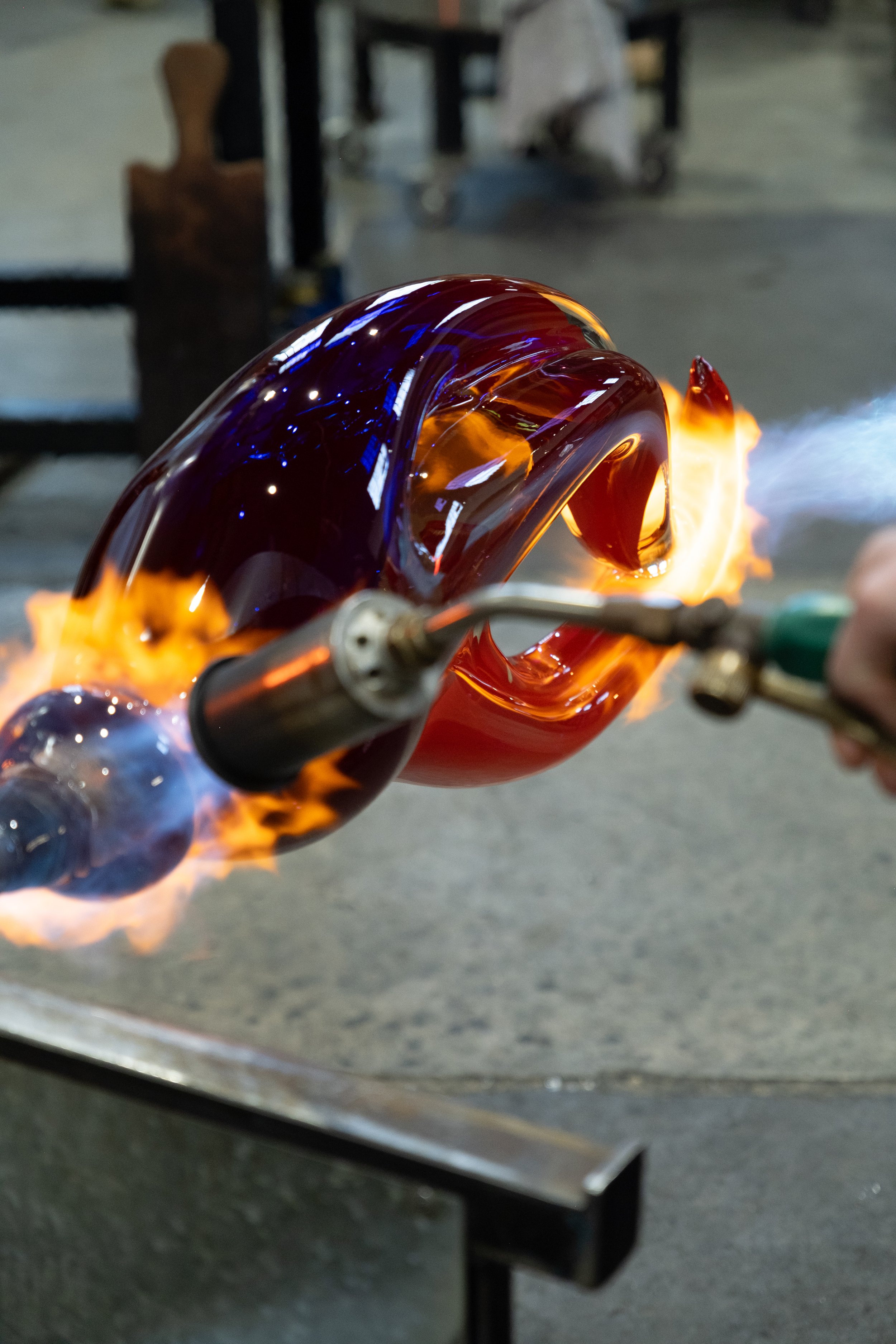Marjan
This series of sculptures were commissioned by a client named Marjan and produced at Canberra Glassworks.
In order to produce the extraordinary large and heavy work, Ruth and team left Melbourne to spend three days at Canberra Glassworks to use their incredible facilities. They have extremely large and multiple glory holes and kilns.
The forms commissioned by Marjan are reminiscent of the feminine form: voluptuous, figurative and juicy with material.
The brief required thickness to the forms, utilised by big areas of clear glass that refract light beautifully. The sculptures had a colour spectrum of red, blue, light green, neon yellow, orange and lilac. For each sculpture three of those hues were chosen to give the pieces more texture. The colours were overlayed or ‘striped’, enabling a viewer to walk around the finished piece and instead of seeing 1, 2, or 3 colours, instead taking in a layered depth of 7, 8, or 9 colours looking through the form. The glass colours are mainly transparent or opals, which become translucent and have a beautiful creamy base to them.
In preparation to arriving at Canberra Glassworks, Ruth made a lot of colours samples and a prototype mockup. She discussed with Marjan what was good and bad about the form and knew exactly what to work on. In Canberra the team of seven came together with the prototypes and colours samples and discussed process methodology. Marjan’s sculptures were made by an extraordinary team of seven people: Tom Rowney, Ben Edols, Nick Doran Adams, Juniper Maffescioni, Charlotte Ward, Hugo Curtis, and Ruth Allen.
To make these sculptures the team had two separate stations, each with a bench, and a glory hole and one shared heating chamber. The glass bubble was coated in three colours, and at the first work station, hot glass was incrementally gathered to achieve the volume or weight of the material. Once this material base was satisfactory, the second work station would begin to produce the appendage. The sculpture is a big, voluptuous form that is weighted at the bottom and becomes narrower at the top, reaching and curling towards the connecting appendage. The circular form, reminiscent of the head of the body is attached in the final stages.
These sculptures proved challenging in the timing and the heat. The scale and mass made it particularly physical for the pole turners, the hefty men who carry and control the weight of the piece in a highly accurate manner. At the final stage, the weight is estimated to be 12kg, however, due to gravitational force, the glass weight at the end of a pole is multiplied by 3, weighing closer to 35kg.









